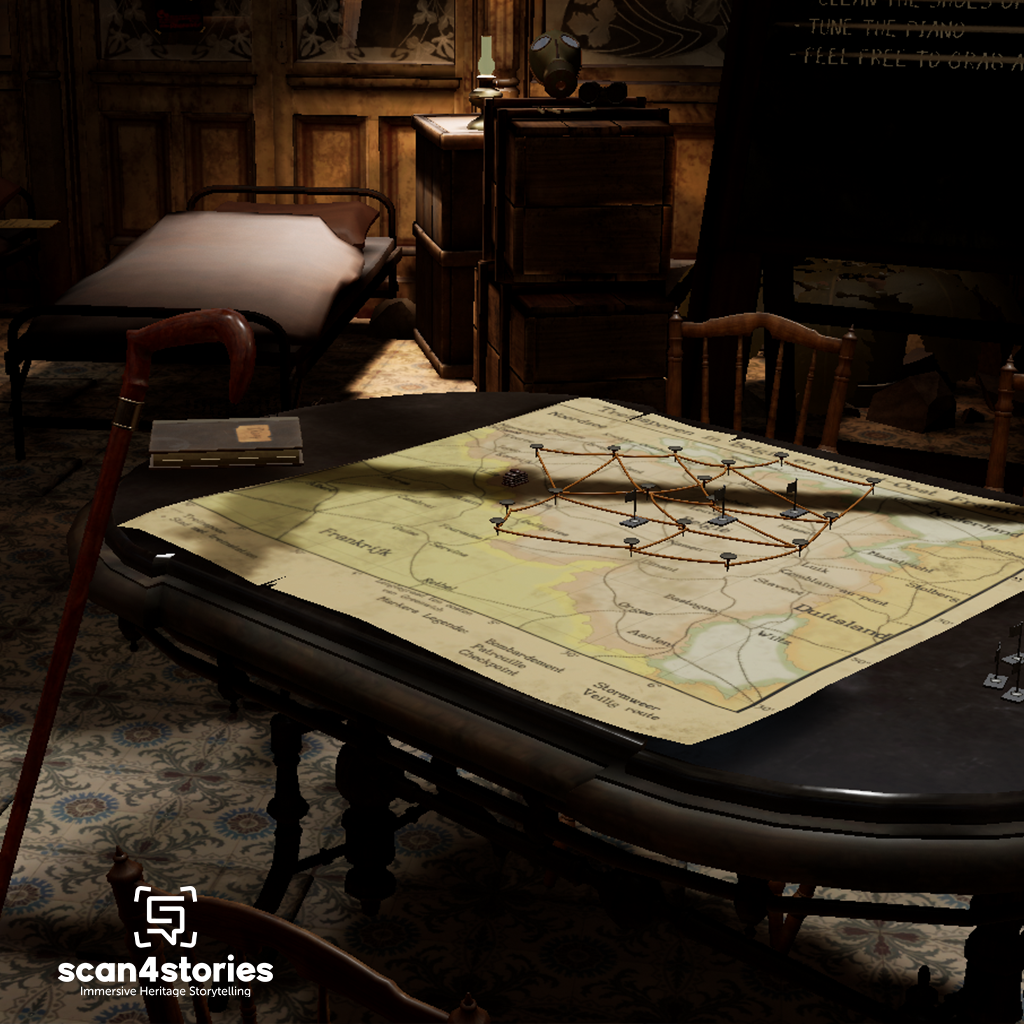Sories
For some prototypes, specific attention was paid to historical stories and events. How can Immersive Technology help to tell these stories in an interactive way? Can we make visitors feel like they are part of this? Allowing them to discover the story themselves through certain interactions without presenting it to them ready-made?
These questions, in combination with some of the ideas that were suggested during the brainstorming sessions, led to the development of two prototypes focusing on role-playing, group experience, interactivity, gameplay and storytelling.
Technology
Woman, nun and spy? Yes, during WWI many women, including some nuns, were active as spies. They operated as members of espionage networks, saving the lives of hundreds of soldiers. The story of three of them became the starting point for this prototype.Story
The year is 1915. Germany invaded Belgium a year ago. Against all odds, Belgium offers more resistance than anticipated. In the meantime, a real front line has formed between the Swiss border and the Belgian coast, which seriously upsets Germany’s plans.
However, many Belgians do not simply accept the occupation and decide to oppose it… About 7000 people in occupied Belgium and northern France rose up against this German occupation force clandestinely.
Real sabotage is too dangerous in this period … The German occupier is fighting back hard and we don’t have the right tools to put sticks in their wheels.
What is possible is to collect information about the whereabouts, the situation, the weapons, the camps, the plans … of the enemy and try to pass it on to the Dutch or the British.
A large number of those who revolted against the German occupation enlisted in an Allied intelligence service. This includes Mère Ignace Claes, who was active in the Ursuline Institute in Mechelen. When WW1 breaks out, she decides to send all the students home. She then decides to escort both German and British students home to their places of residence in Germany and the United Kingdom. During WW1, Mère Ignace Claes supervises many students in this way and therefore crosses borders and even the Channel several times. It is during these trips that Mère Ignace Claes smuggled reports containing information for the Allies. To give the story a bit more volume, two other female spies were involved in the experience. Edith Cavell and Gabrielle Petit were therefore also assigned a role.
While Mère Ignace Claes was mainly concerned with smuggling information across borders, Edith Cavell is mainly known for setting up an escape network for stranded soldiers. Gabrielle Petit smuggled soldiers and information across national borders and distributed the clandestine newspaper La Libre Belgique. Each of them had a particular specialty as a spy.
Experience
To give the player the opportunity to discover for themselves what the espionage work of these women looked like during WWI, a VR Escape Room concept was developed in which you as a player have to perform various of the assignments described above. You have to find the hidden information, decode information, arrange passports and map out an escape route for a stranded soldier. The story is, as it were, not told, but the player experiences it himself. To realize this experience, we collaborated with the DAE students as part of their graduation project.
Since Mère Ignace Claes forms the starting point of this story, the Winter Garden was chosen as the setting for the experience. The Winter Garden was modeled entirely in 3D, including the imposing glass dormer window. The interior was also virtually recreated historically correct. To match the look and feel with the setting of the experience, the Winter Garden was given a WWI atmosphere. It is within this space that the player must successfully complete the various assignments in order to get the soldier to his final destination.
Initially, the intention was to turn this experience into a group experience where you could work on the assignments with four players in the virtual space. Due to the limited time the students had, the final prototype has become an individual experience. But a group experience in Virtual Reality is one of the possibilities. In this way it can respond to one of the bottlenecks of the technology, namely the often individual experiences that do not always go hand in hand with the type of museum visitors and the logistical possibilities.




